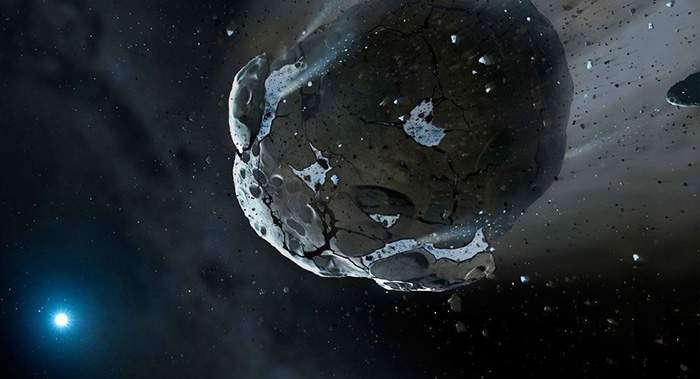The Square Kilometer Array will scan the stars, hunting for the radio signals of distant civilizations.
The ultimate goal of the project is to turn volatiles — water in particular, of which all asteroids are partly comprised — into an affordable propellant for space vessels.
But the biggest challenge facing researchers is how to extract those volatiles out of rocky carbonaceous chondrite asteroid surfaces.
“Optical mining” could be the solution, as it would make possible the extraction of water from space rocks without the use of “complex or impractical robotics.”
Joel Sercel, an Apis investigator, told Space.com that highly concentrated optical energy – or, more simply, sunlight focused and concentrated by two sets of mirrors – can be used as a laser to essentially bake water out of asteroids, which will then be collected by containment bags right there in space.
"It actually digs holes and tunnels into the rock,” Sercel said. “The heat goes in, is absorbed in thin layers and drives out the volatiles in tiny, explosive like pops that eject material in a controllable way."
A self-deployable habitat can save crews valuable time in setting up quarters on faraway locales like Mars.
To check whether this concept actually works, Sercel along with his team, supported by NASA and a small business contract, will carry out experiments at the White Sands Missile Range in New Mexico, a facility once used for conducting nuclear weapon tests.
A cantaloupe-sized asteroid model will be heated to extremely high temperatures by reflected and concentrated sunlight. If the strategy works, the project will move into its next phase.
Sercel pointed out that over 120 tons of water, collected over several months using this technique, could be stored, and transported to lunar orbit using some as fuel for its onboard solar-thermal propulsion system. Once there, it could be used to fuel a variety of ventures, including exploration beyond low-Earth orbit.
Angel Abbud-Madrid, director of the Center for Space Resources at the Colorado School of Mines in Golden, Colorado, told Space.com this strategy could mean a real breakthrough in space exploration, following years of ineffective attempts to apply terrestrial mining techniques in space.
“We are excited to finally participate in the development of what we consider the most feasible and effective technique to recover valuable volatile elements, such as space propellants, from asteroids," he said.
More about:
















































